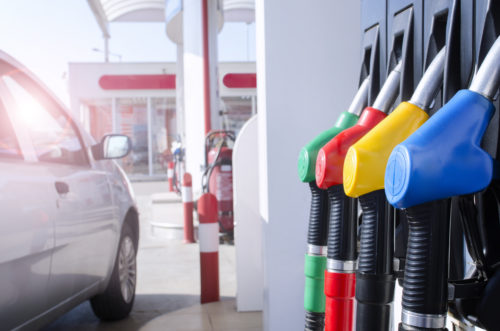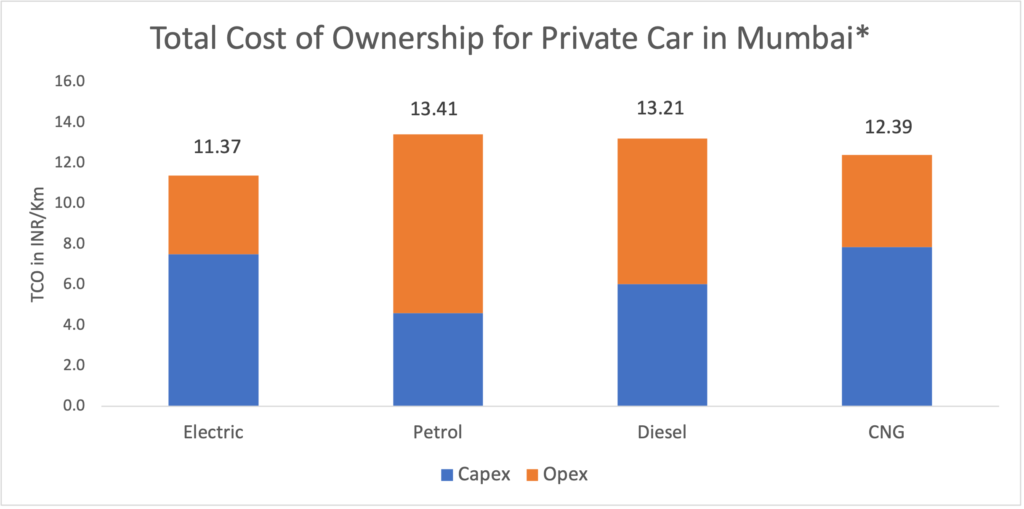Electric Vehicles May be the Answer to Rising Fuel Prices
This article was originally published in the EMobility+ magazine (page 42-43).
Over the last two months, India’s second wave of COVID-19 has brought urban areas to a standstill. The public health and socioeconomic impacts of the lockdown have been devastating for families across the country. Now, as we slowly get moving again, household budgets face the challenge of rising transport costs in the form of fuel.
Petrol and diesel prices are at an all-time high. In Mumbai, petrol crossed the ₹ 100 per litre mark on May 29, with diesel not far behind at ₹ 93 per litre. In June last year, petrol was about ₹ 20 per litre cheaper in Mumbai at ₹ 80. In Delhi, petrol prices touched ₹ 95 per litre, as compared to ₹71 per litre last year.
Most parts of the country are witnessing this continuous hike in fuel prices, pushing commuters to look for cheaper mobility solutions. Electric vehicles (EVs) are a potential low-cost alternative that may get traction in the current scenario of rising operational costs of petrol and diesel vehicles. Powered directly by the grid, EVs are increasingly proving to be operationally cheaper for their owners than petrol and diesel vehicles in terms of their total cost of ownership (TCO).
The TCO for any vehicle is the sum of all the costs incurred from owning the vehicle to interest payments, road tax payment, fuel costs, maintenance costs, and finally, the salvage value obtained from selling the vehicle in the second-hand market. The TCO comparison of a vehicle for various fuel types in the current market scenario highlights that the price of owning and operating EV vehicle is lesser than its internal combustion engine (ICE) counterparts. An individual purchasing a private car in Mumbai and travelling an average of 50 km daily, saves ₹ 2 per kilometre effectively by using an electric car over a petrol one. The saving can be as much as ₹ 4.5 per kilometre for a cab driver operating 160 km daily.
*The cost of EV is inclusive of all the incentives available in the market
The higher upfront cost of EVs has historically been a barrier to its adoption. A typical electric car costs almost 40% more than its equivalent petrol car. However, an electric car provides huge savings in its daily operations. In addition to lower fuel cost, lower maintenance and repair costs make it almost a third cheaper than the petrol car. As the prices of petrol and diesel continue to soar and that of EV declines, these savings are expected to continue increasing, making them more and more viable.
Indian EV ecosystem is still in its nascent stage; an enabling environment for its adoption is being created by various actors. The Government of India has introduced subsidies and exemptions exclusively for EVs and an increasing number of state governments are formulating policies designed to accelerate EV adoption. Banks are also recognising the opportunity presented by EVs and creating dedicated low-interest ‘green’ loans to help their customers make the switch. Vehicle batteries which are recognised as the most expensive elements of EVs are steadily becoming cheaper every year.
Altogether, these developments indicate trends of EVs increasingly becoming more affordable than their petrol or diesel equivalents. Choosing an EV over ICE vehicle may no longer be a decision made due to environmental consciousness of consumers: it will also be driven by the fact that EVs will be far easy on the pocket in the longer run. This is sure to be a major win for the price-sensitive Indians, powering the country’s shift to a cleaner mobility future.

